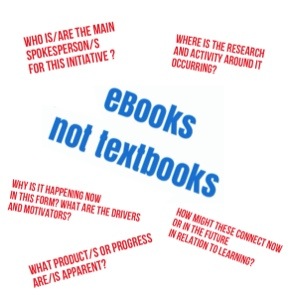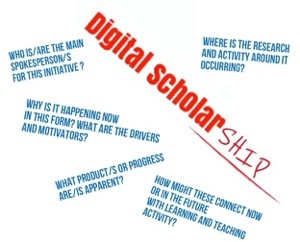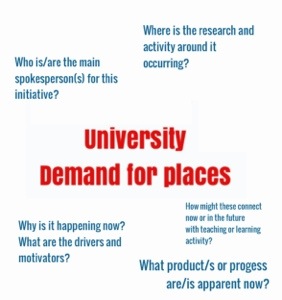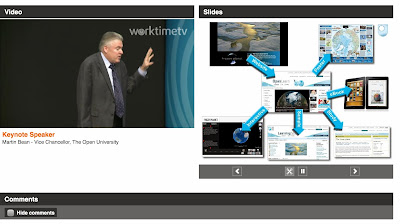LISTEN: augmented audio-augmented museum guide
Andreas Zimmermann, Andreas Lorenz (2008)
This is a paper presentation at a conference of a museum visitor guide system that uses a combination of tracking/observation and audio-artifacts to create a personalized visitor experience. The paper reveals the extent of trials, tests and adjusts as well as evluation which in turn offer ways that a proposal might be in the form of a presentation of the platform or a workshop that might assess how visitors are profile at the start of their visit.
I had in mind some kind of open, mobile personalized learning for use by visitors to military museums, perhaps national trust properties and even battlefields. Each of these offer very differ user experiences and expectations though. A literary research reveals that the planning for visitors to an exhibition, collection of curated events or gallery is complex and the history of using technology to support visitor experiences is lengthy.
The research for conference papers is approached from two directions: the standard approach through the OU online library using terms such as ‘museum’ ‘elearning’ and ‘augmented’, while also drawing on personal knowledge of the many digital agencies based on the South Coast (profiles of these companies are available from the regional hi-tech association ‘Wired Sussex’). Cogapp have been producing digital content for museums since the mid 1980s. These and other agencies often present ‘papers’ at conferences, though the quality, in academic terms, of these presentations is sometimes questionable - is it promotion or is this the presentation of valid research? I can also draw upon a personal interest in musuems, galleries, and other visitor attractions from national trust properties to battlefields all, or some of which, come with some kind of ‘guide’ - traditionally as a leaflet or guide book (Picaso Museum, Jean Miro), often with an aduio guide (Alcatraz, Muir Woods, Royal Academy: Van Gogh, Bronzes), though increasingly from online resources with some attempts to use modern mobile devices (Design Museum) or to personalize the experience (In Flanders Fields, Ypres). (Great North Museum)
There are major, global conferences on e-learning, some with an orientation towards, or significant presence from the museum sector. Over the last decade there has been considerable interest in improving, through personalization, the visitor experience.
The attraction of this paper, although it is limited to an audio platform whereas I had in mind something visual, the narrative from conception to testing, delivery and evaluation is thorough. It is insightful on studies of the museum visitor experience, curator relationships with artifacts, use and potential of audio and tracking/observation technology - both hardware and software (Zimmermann and Lorenz, 2008:391)
-
motion-tracked wireless headphones
-
current position
-
head orientation
-
individualized and location-aware soundscape
as well as content preparation and feedback on an iterative process.
These approaches will become increasingly sophisticated, discrete and effective for different visitor ‘types’, even reflecting how a person’s behaviour may change during the course of a visit. It is insightful to discover the degree of sophistication for understanding perception types (Zimmermann and Lorenz, 2008:391)
-
self-perception
-
visual
-
tactile space-perception
-
acoustic space-perception
And visitor types:
A definition of personalized (Zimmerman and Lorenz, 2008:394)
-
Adapts
-
Layers of information
-
Increasing levels of involvement
Pedagogical (Zimmermann and Lorenz, 2008:400)
-
increasing knowledge
-
increasing comprehension
-
considering the social context
McCarthy and McCarthy 2005 distinguish four types of learners:
-
imaginative
-
analytical
-
common sense
-
experimental
Gardner 1993 identifies seven:
-
linguistic
-
logical-mathematical
-
musical
-
bodily-kinesthetic
-
spatial
-
interpersonal
-
intrapersonal
Veron and Levasseur 1983 determined visiting styles based on observstions of animals (Zimmermann and Lorenz, 2008:404):
-
ants (following the curator's path)
-
fish (holistic point of view)
-
butterfly (interest in all exhibits without following the curator's path)
-
grasshopper (interest only in specific exhibits)
leading to the Macke Laboratory outputs of:
-
sauntering: the visitor is slowly walking around with an excursive gaze.
-
goal-drive: the visitor displays a direct movement with the gaze directed towards a specific artwork.
-
standing, focussed: the visitor is standing with the gaze directed towards a specific artwork
-
standing, unfocussed: the visitor is standing or sitting with an excursive gazs
(Zimmermann and Lorenz, 2008:409):
- fact-orientated - putting a high eight on spoken text
- emotional - prioritizing music pieces and sound effects
- overview - focusing mainly in short sound entitites
REFERENCE:
Zimmermann, A, & Lorenz, A 2008, 'LISTEN: a user-adaptive audio-augmented museum guide', User Modeling & User-Adapted Interaction, 18, 5, pp. 389-416, Business Source Complete, EBSCOhost, viewed 28 October 2013.







